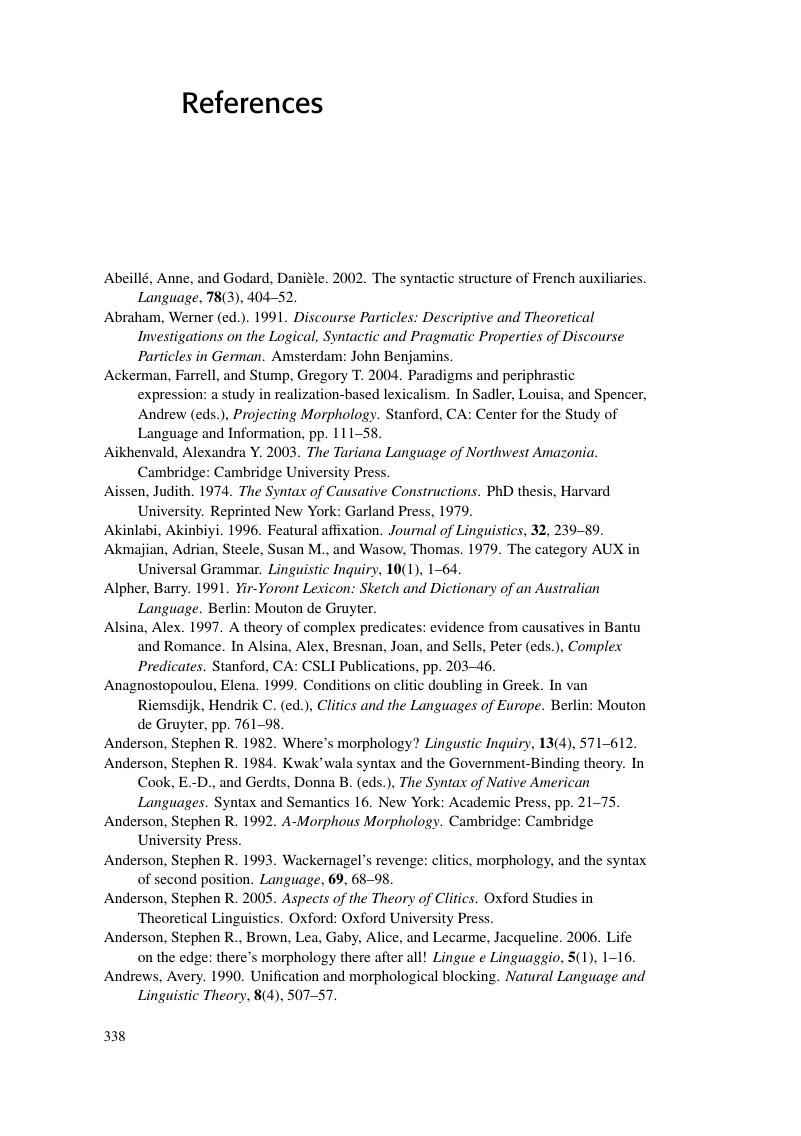Book contents
- Frontmatter
- Contents
- List of tables
- Preface
- Conventions and abbreviations
- 1 Preliminaries
- 2 The functions of clitics
- 3 Types of clitic system
- 4 Clitics and phonology
- 5 Clitics and morphology
- 6 Clitics and syntax
- 7 Clitics, affixes and words
- 8 Approaches to clitics
- 9 Envoi
- Notes
- References
- Index of names
- Index of languages
- Index of subjects
- References
References
Published online by Cambridge University Press: 05 August 2012
- Frontmatter
- Contents
- List of tables
- Preface
- Conventions and abbreviations
- 1 Preliminaries
- 2 The functions of clitics
- 3 Types of clitic system
- 4 Clitics and phonology
- 5 Clitics and morphology
- 6 Clitics and syntax
- 7 Clitics, affixes and words
- 8 Approaches to clitics
- 9 Envoi
- Notes
- References
- Index of names
- Index of languages
- Index of subjects
- References
Summary

- Type
- Chapter
- Information
- CliticsAn Introduction, pp. 338 - 357Publisher: Cambridge University PressPrint publication year: 2012



